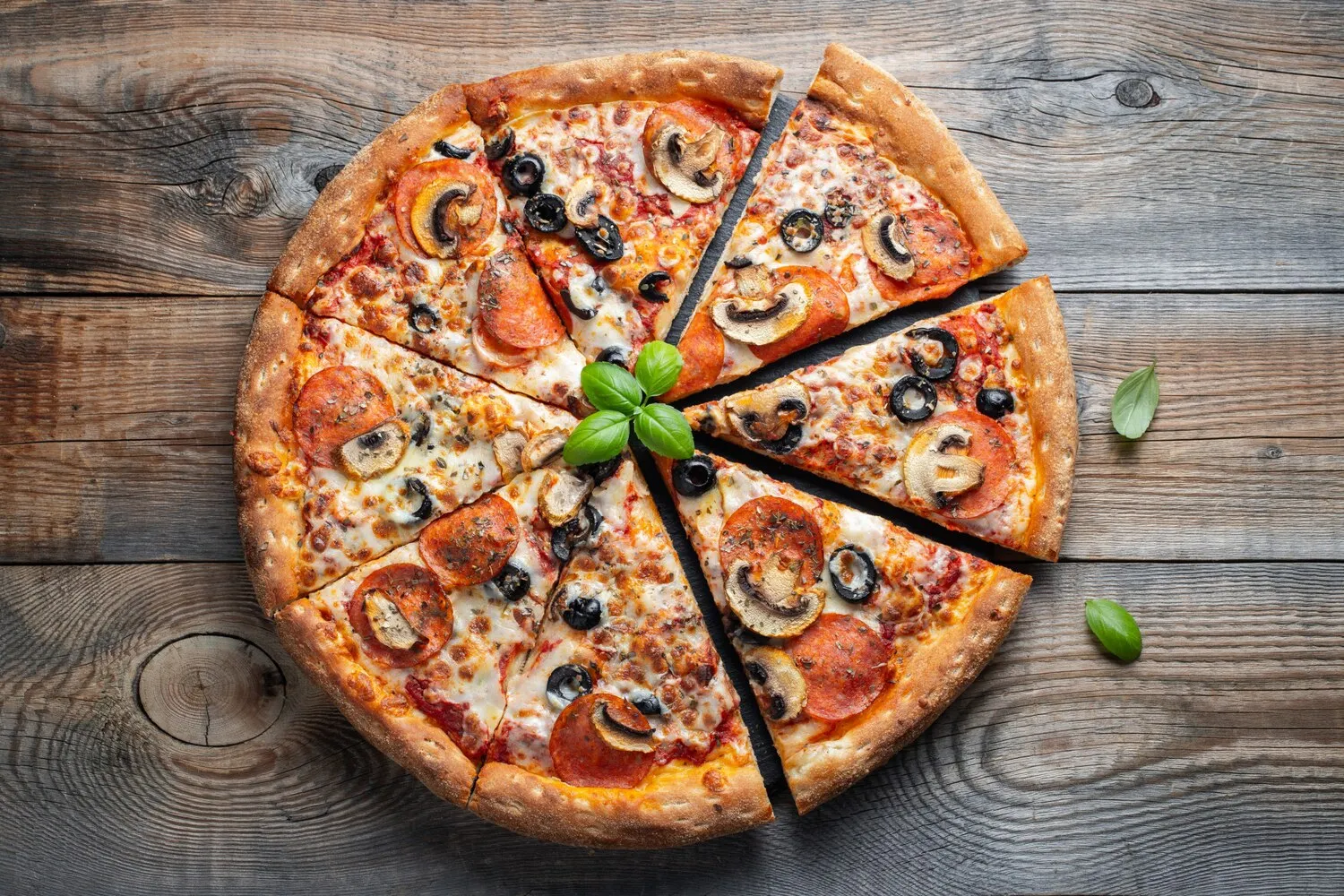
Pizza
They offer a variety of pizza, prepared with quality ingredients.
Nutrition Facts
* The % Daily Value (DV) tells you how much a nutrient in a serving of food contributes to a daily diet. 2,000 calories a day is used for general nutrition advice.
Pizza's origins can be traced back to ancient civilizations, where flatbreads topped with various ingredients were common. However, the modern pizza, with its Neapolitan roots, evolved in the 18th or early 19th century as a quick, affordable food for the working class of Naples. The introduction of tomatoes from the Americas played a pivotal role in shaping the flavors we associate with pizza today.
Pizza has transcended its humble origins to become a global culinary phenomenon, deeply ingrained in popular culture and social gatherings. Its versatility and affordability have made it a staple food around the world, often associated with casual dining, celebrations, and communal meals. Pizza is more than just food; it's a symbol of comfort, connection, and shared experiences.
Social Gathering Staple
Pizza is a go-to choice for parties, game nights, and casual gatherings. Its shareable nature encourages communal eating and conversation.
Regional Variations
Different regions have developed their own unique pizza styles, reflecting local ingredients and culinary traditions. From New York-style to Chicago deep-dish, these variations showcase the adaptability of pizza.
Culinary Innovation
Pizza has become a canvas for culinary creativity, with chefs experimenting with unconventional toppings, crusts, and sauces to push the boundaries of flavor and presentation.
Pizza boasts a complex interplay of savory, acidic, and sometimes sweet flavors, depending on the toppings. The base dough contributes a subtle, yeasty flavor, while the tomato sauce adds a vibrant acidity and sweetness. Cheese provides a rich, creamy, and salty counterpoint. Toppings offer a diverse range of flavors, from the spicy pepperoni to the earthy mushrooms and the sweet peppers.
The foundation of pizza flavor lies in its crust, often made with wheat flour, water, yeast, and salt. The sauce, typically a simple tomato-based concoction seasoned with herbs like oregano and basil, delivers a bright, acidic taste. Mozzarella cheese, known for its mild flavor and excellent melting properties, is a classic choice. Toppings such as pepperoni offer a salty, spicy kick; mushrooms provide an earthy umami; onions contribute a sharp, pungent note; and olives add a briny, savory element. Regional variations introduce different cheeses, meats, vegetables, and sauces, creating an endless spectrum of flavor profiles.
Dough Matters
A well-made dough is crucial for a great pizza. Allow the dough to rise properly and stretch it gently to avoid tearing. Consider using a pizza stone or baking steel for a crispier crust.
Sauce Sparingly
Avoid over-saucing the pizza, as it can make the crust soggy. A thin, even layer of sauce is ideal.
Quality Ingredients
Using high-quality ingredients, especially fresh mozzarella and ripe tomatoes, will significantly enhance the flavor of your pizza.
Oven Temperature
Cooking pizza at a high temperature (450-500°F) will result in a crispy crust and well-melted cheese. If you are baking at home, crank up your oven as hot as it will go.
Explore additional Pizza dishes and restaurants
Explore PizzaDiscover top dining spots and culinary experiences in Firenze.
Explore FirenzeLearn more about the food culture, restaurant scene, and culinary heritage of Italy.
Explore Italy